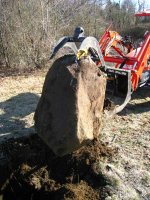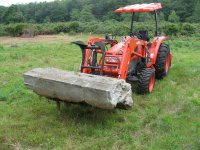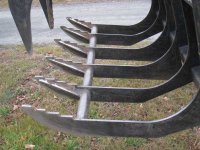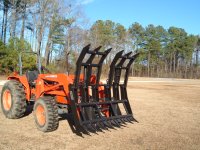dex3361
Elite Member
- Joined
- Aug 22, 2008
- Messages
- 3,551
- Location
- N. of Charleston WV
- Tractor
- Kubota L4400-1 HST,FEL, 3x3 remotes, TNT. BX1500 54 mmm
I bought a 5 foot rear scraper blade and the Anbo grapple used for $1500.Dex, what did that run you? I like the 6" spacing option on the anbo.






